THE STELLAR DYNAMICAL CLOCK
HOW TO LOOK YOUNG WHEN YOU`RE NOT
STARS REVEAL THE SECRET OF AGING WELL
THE STELLAR DYNAMICAL CLOCK
HOW TO LOOK YOUNG WHEN YOU`RE NOT
STARS REVEAL THE SECRET OF AGING WELL
Some people are in great physical shape at the age of 90, others appear old before they are 50. A new study demonstrates that this is true also for stellar clusters. In fact, despite their impressively large chronological ages of 12-13 billion years, stellar clusters can look more or less young. Astronomers have found a new clock able to measure the biological age of star clusters thus revealing their true "physical shape". The discovery has been published in the Thursday 20th December issue of the prestigious journal Nature and is the result of a study performed by an international team of astrophysicists, led by Francesco Ferraro of the Physics and Astronomy Department of the Bologna University.
"As the physical shape of a person is imprinted on its body, we discovered that the effects of dynamical aging are imprinted in the shape of the Blue Straggler radial distribution", continues Ferraro.
Thanks to this innovative measure of the cluster "physical shape", astronomers can now rank globular clusters on the basis of the level of dynamical evolution suffered so far by each of them.
The discovery represents indeed the definition of a new cosmic clock able to precisely measure the dynamical age of each individual cluster. The radial position of the region devoid of Blue Stragglers represents the hand of the clock. "As the engine of a chronometer advances the clock hand to measure the time flow, in a similar way the progressive sedimentation of Blue Stragglers towards the cluster centre moves outward the position of the depleted region within the cluster, thus marking its dynamical age", adds Ferraro.
Galactic Globular Clusters are stellar aggregates composed by up to 1 million stars all formed about 13 billions years ago. Being among the oldest stellar systems in the Universe (the Big Bang dates back to 13.7 billion years), they witnessed the formation of our galaxy and are true fossils from which to reconstruct the past history of the Milky Way.
Like human beings, also stellar aggregates get older. The chronological age of people can be, at a first approximation, inferred from the colour of their hair. Similarly that of clusters can be estimated from the colour of their stars, which (overall) get redder and redder as time passes by. "The vast majority of globular clusters in our Galaxy are indeed very old, but, as in the case of people, some clusters age better than others and we have found the way to measure it.", says Francesco Ferraro, of the Department of Physics and Astronomy (DIFA) of the Bologna University, leader of the team that made the discovery.
Starting from the moment of their formation, stellar clusters are subject to significant changes in the spatial and velocity distribution of their stars (this is called "dynamical evolution"). "Similarly to metal balls into a honey basket, heavy stars tend to sink toward the cluster central regions. The heavier is a metal ball and the less dense is honey, the faster the ball will reach the bottom of the basket; similarly, the sinking time of heavy stars depends on stellar mass and on the internal environment of each cluster", continues Ferraro. "Because the efficiency of these dynamical processes depends in a complex way on the internal structure of each cluster, understanding how much a stellar aggregate has dynamically evolved since its formation was a quite difficult task", adds the team member Barbara Lanzoni (DIFA).
The large majority of the observed clusters is seen in the process of aging: the Blue Stragglers orbiting closest to the cluster core are the first ones to migrate inwards; then they are progressively followed by the stars at larger and larger distance from the centre. "In these clusters we clearly identified a sort of depleted region that flags the distance from the centre already affected by the migration process. As time goes on, Blue Stragglers at progressively larger distances will sink into the core and hence the depleted region will be observed at growing distances from the cluster centre", adds Dalessandro.
Image gallery of 12 globular clusters ranked in order of increasing dynamical age as measured from the observed radial distribution of their blue straggler stars.
Hawaii, the Subaru and the Large Binocular telescopes), the team of astronomers studied the spatial distribution of a particular class of heavy stars (the so-called Blue Stragglers) in a sample of 21 globular clusters, and they recognized the signature of the progressive sedimentation of Blue Stragglers toward the centre of each stellar system.
Migration of blue straggler stars in globular clusters
This animation shows how the spatial distribution of the high-mass Blue Straggler Stars changes over time in globular clusters. As clusters get dynamically older, the high-mass stars migrate inwards, starting with those near the cluster core, and ending with those farthest away.
This discovery opens the window to a number of fascinating applications that will clarify the overall evolution of stellar systems. For example, by using the stellar dynamical clock, astronomers will finally be able to predict how far a stellar cluster is from the most catastrophic stage of its evolution: the so-called core-collapse.
Blue Straggler Stars
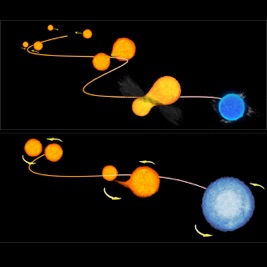
This illustration shows how Blue Stragglers become heavier than normal cluster stars: they are the result of stellar collisions (upper panel) or vampirism phenomena between two companion stars (lower panel).
"Mapping the position of the Blue Stragglers over the entire cluster extension was not an easy task", says Emanuele Dalessandro from DIFA, "We needed to combine high-resolution Hubble imagery of the crowded cluster centres, with ground-based images of their less-busy outer regions".
Form the analysis of the observational dataset, the team found that stars clusters can be efficiently grouped on the basis of the radial distribution of their Blue Straggler populations and these groups correspond to different stages of dynamical evolution suffered by each stellar system since its birth. "We found that, in spite of their old age, a few clusters appear indeed in very good 'physical shape', with Blue Straggler stars still distributed throughout the cluster. Instead other aggregates (with the same chronological age) appear dynamically old, with almost the entire Blue Straggler population sunk into the cluster centre", says Barbara Lanzoni.
The stellar dynamical clock
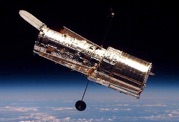
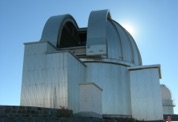
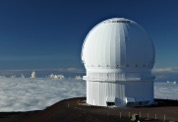
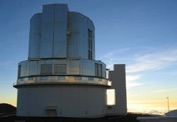
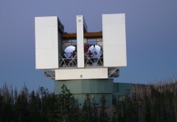
By using a proper combination of data acquired with different telescopes (the NASA/ESA Hubble Space Telescope and four ground-based facilities: the MPG/ESO 2.2m, the Canada-France-
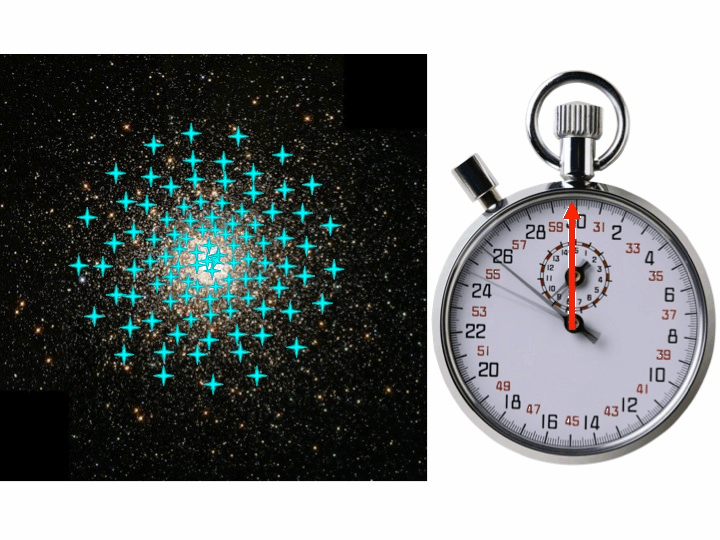
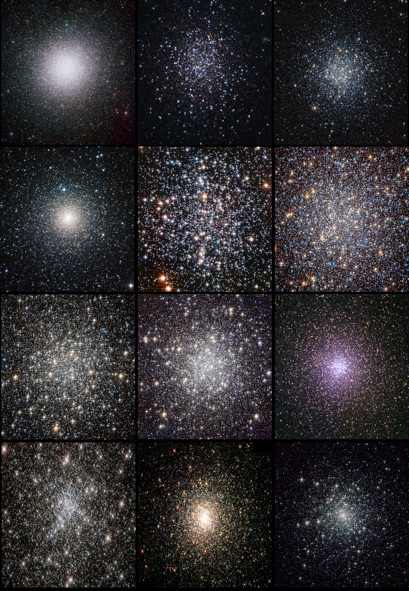
For any additional information please contact
Francesco Ferraro
email: francesco.ferraro3@unibo.it
tel: +390512095774
mobile: +393666357560


Cluster core-collapse
The most catastrophic stage of the dynamical evolution history of globular clusters is the so-called "core collapse": the cluster core suffers a runaway contraction, which leads to an impetuous increase of the central stellar density (virtually toward infinity). When astronomers first realized that clusters undergo core collapse, it was thought that much of the system would vanish into a black hole and the cluster would cease to exist. Later on it was realized that interactions among stars should prevent the total collapse and leave a cluster with a very dense core.
The efficiency of dynamical processes depends in a complex way on the internal structure of each system. As a consequence, also the time that a cluster needs to reach core collapse can vary from a few millions, up to tens billions of years (or be even larger than the age of the Universe). However, the number of clusters suspected to have already undergone core collapse is much smaller than predicted by theory, thus demonstrating that much about cluster dynamical evolution still waits to be understood.
The discovery of the dynamical clock is the first major result obtained within Cosmic-Lab, a 5-year Advanced Grant project funded with 1.8 million euros by the European Research Council, specifically designed to probe the complex dynamical phenomena occurring into the congested regions characterizing star clusters. "Thanks to this grant we have grown a team of prepared and motivated (young) researchers, and the results are coming! This discovery represents a major success for the Italian and the European astrophysical community and suggests that we are on the right track not only to open new perspectives to the astrophysical knowledge, but also to provide a fruitful breeding ground for the formation of young scientists with a broad view in Physics and Astrophysics. This project is contributing to create a top-level research centre for stellar Astrophysics at the Bologna University, that will be a reference for young students, not only in Italy, but also in Europe and all over the world", concludes Ferraro.